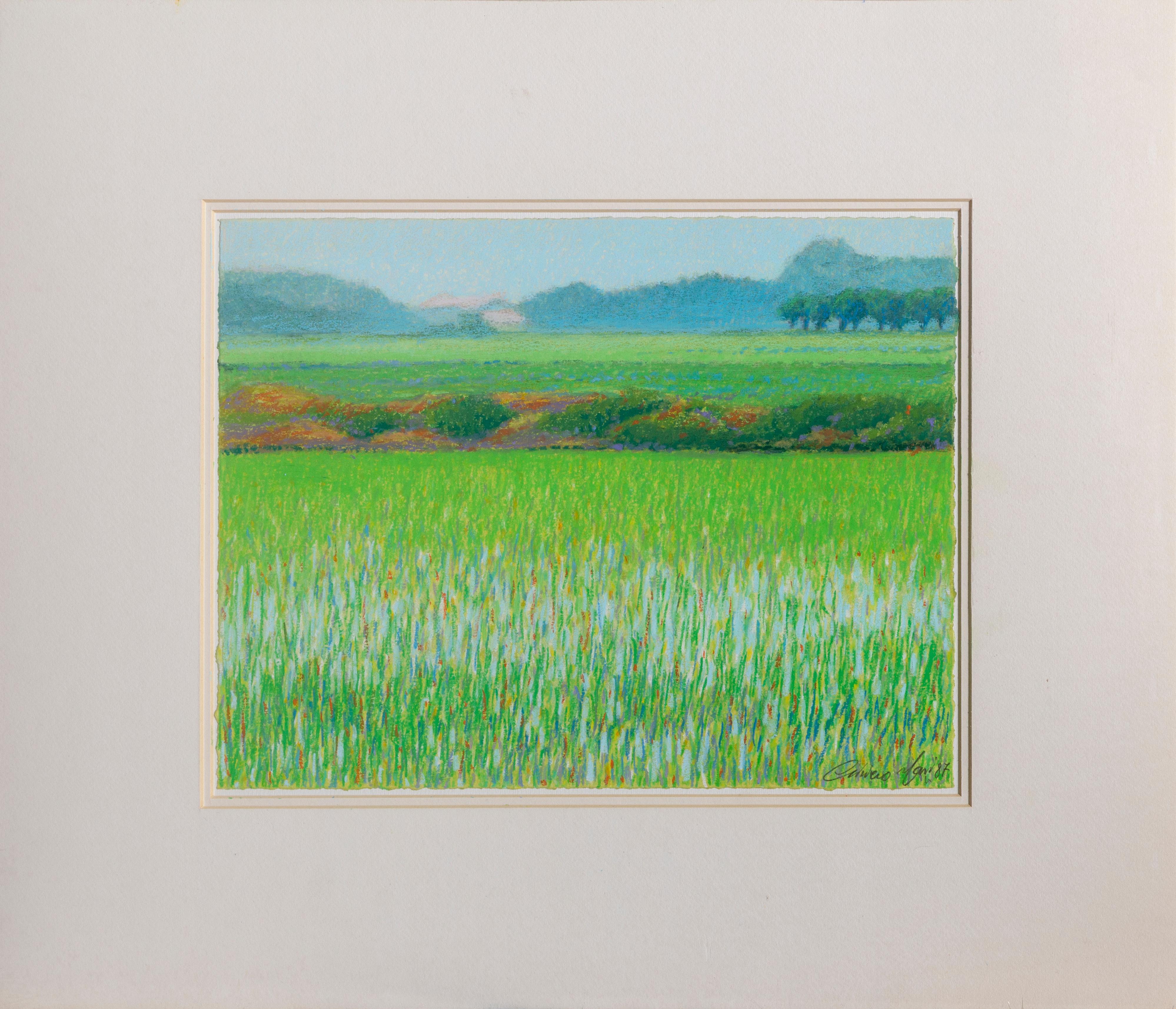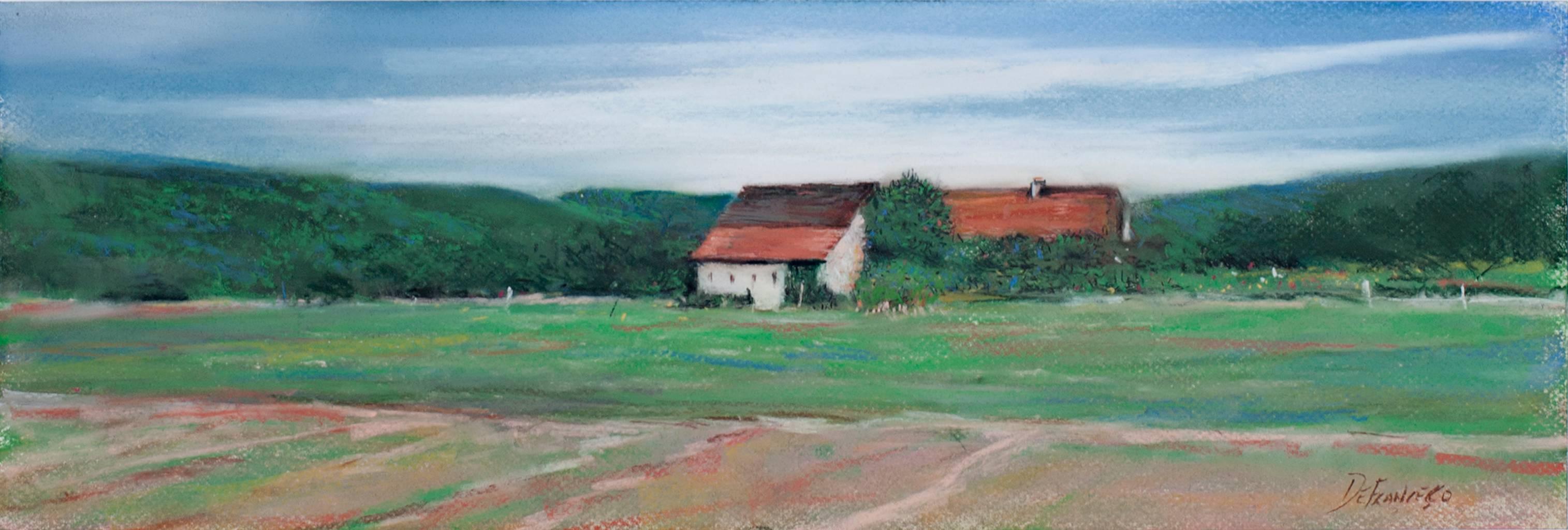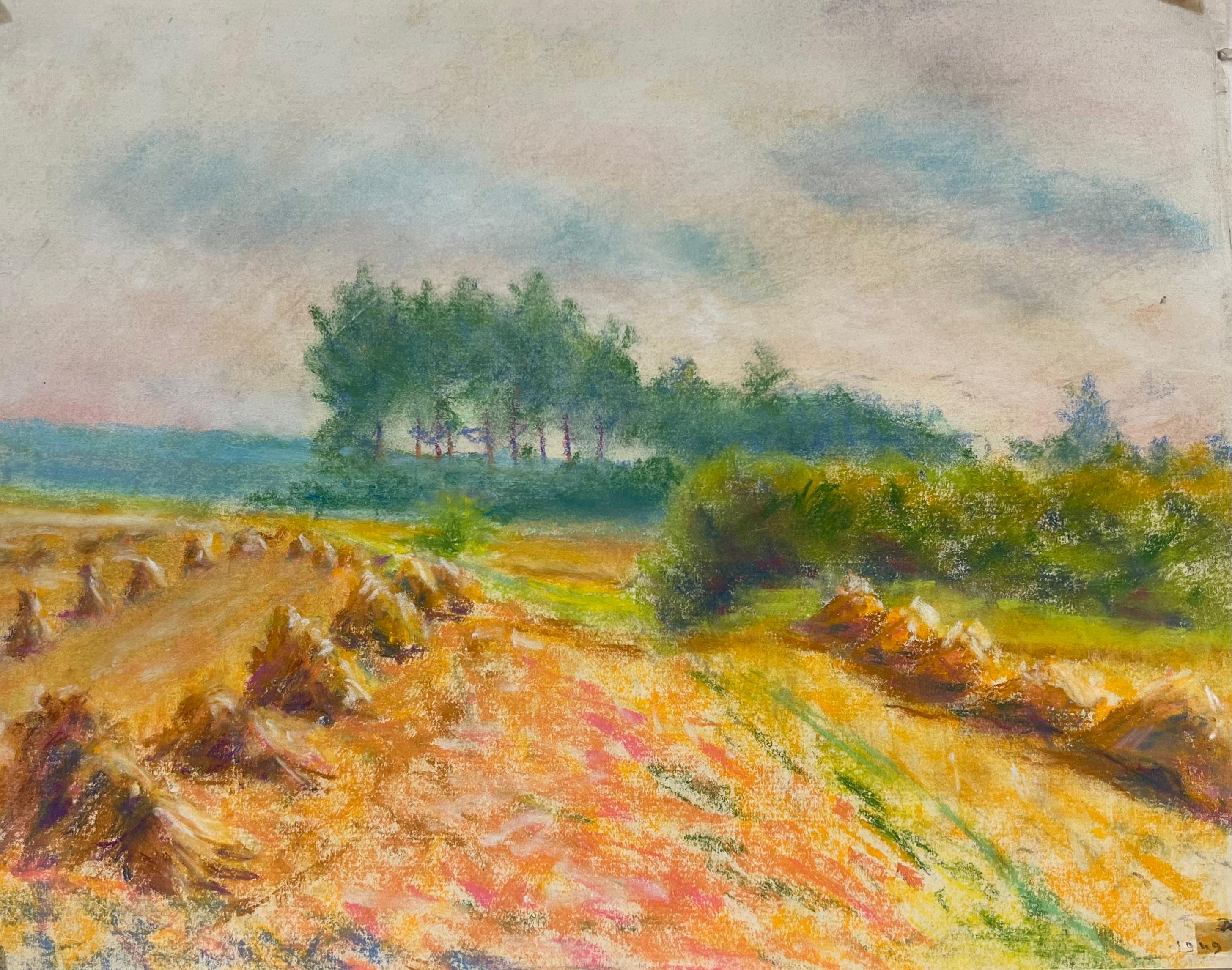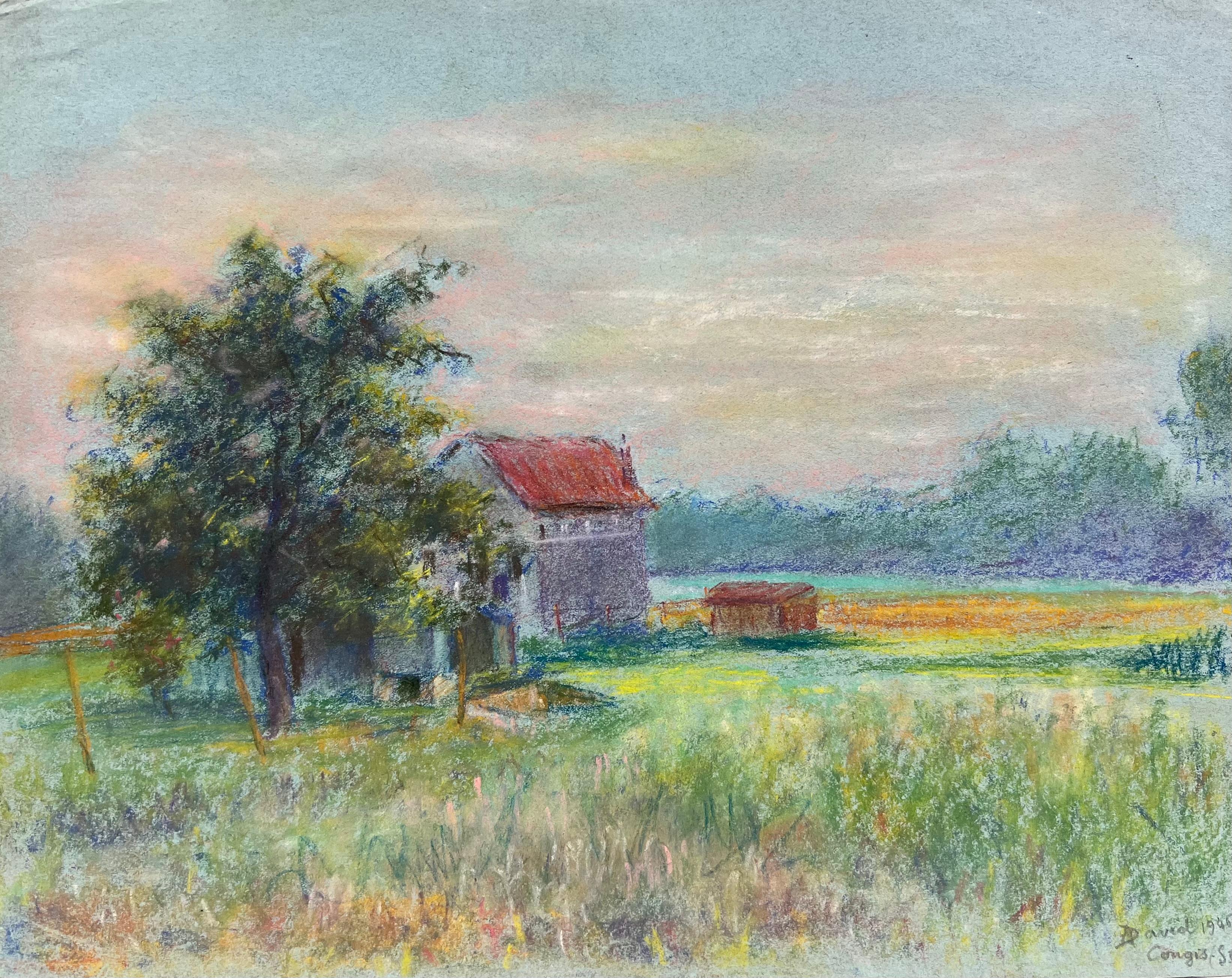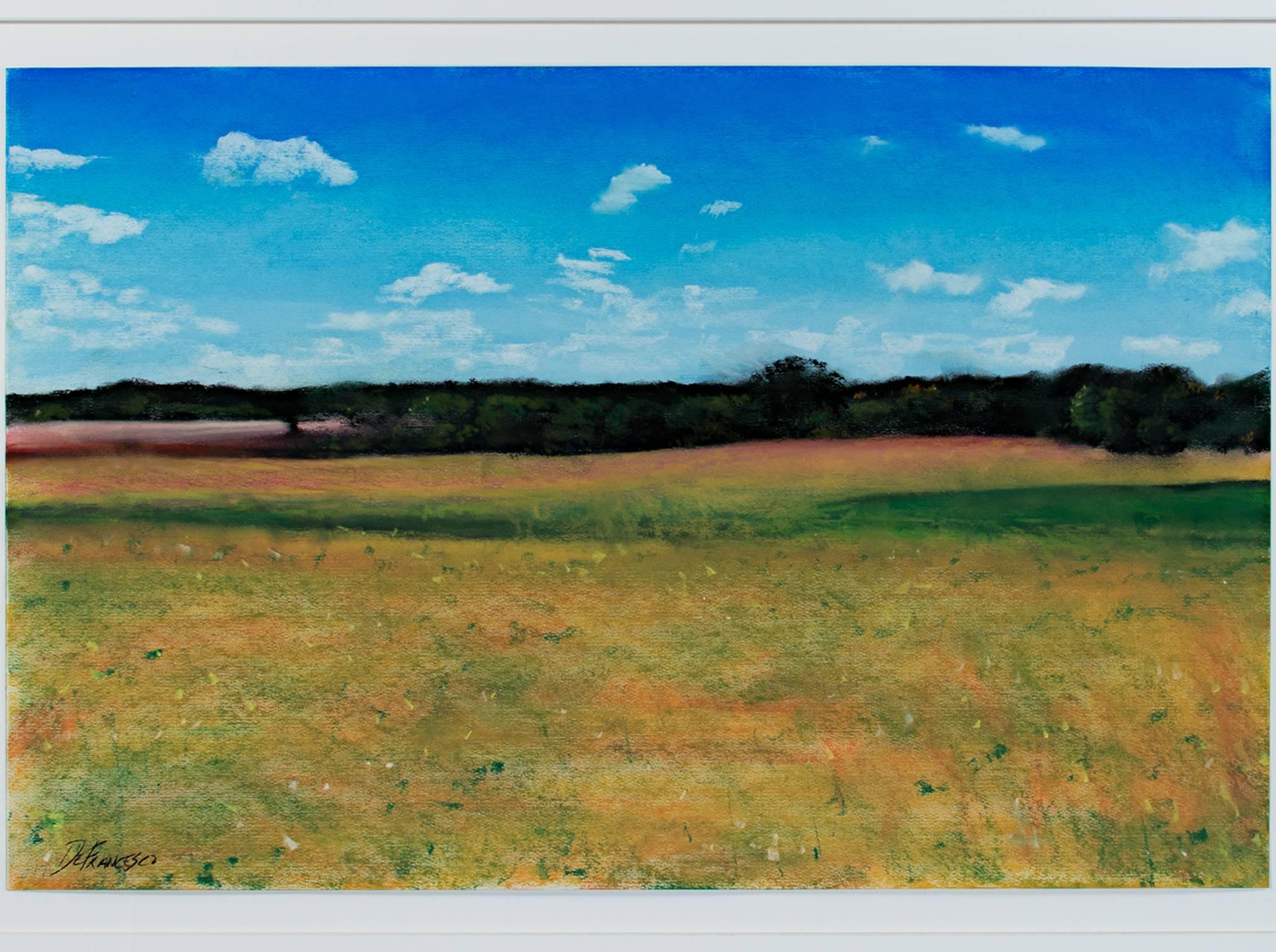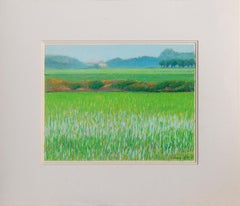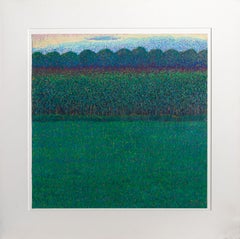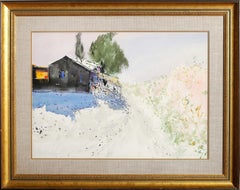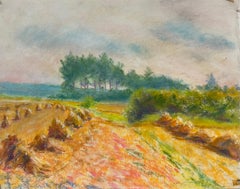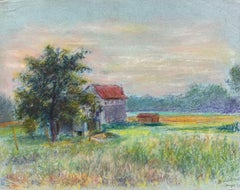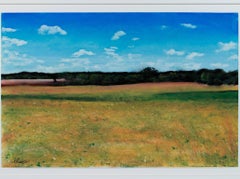Items Similar to Wheat Field and House, Signed Pastel on Paper by Oliviero Masi
Want more images or videos?
Request additional images or videos from the seller
1 of 9
Oliviero MasiWheat Field and House, Signed Pastel on Paper by Oliviero Masi1987
1987
$1,800
£1,357.38
€1,569.87
CA$2,525.39
A$2,807.13
CHF 1,471.44
MX$34,281.83
NOK 18,370.04
SEK 17,282.78
DKK 11,717.08
About the Item
Wheat Field and House
Oliviero Masi
Italian (1948)
Date: 1987
Pastel on paper, signed and dated lower right
Size: 12 x 19 in. (30.48 x 48.26 cm)
- Creator:Oliviero Masi (1948)
- Creation Year:1987
- Dimensions:Height: 12 in (30.48 cm)Width: 19 in (48.26 cm)
- Medium:
- Movement & Style:
- Period:
- Framing:Framing Options Available
- Condition:
- Gallery Location:Long Island City, NY
- Reference Number:Seller: RO743491stDibs: LU46615790302
About the Seller
4.9
Platinum Seller
Premium sellers with a 4.7+ rating and 24-hour response times
Established in 1979
1stDibs seller since 2014
3,094 sales on 1stDibs
Typical response time: 1 hour
- ShippingRetrieving quote...Shipping from: Long Island City, NY
- Return Policy
Authenticity Guarantee
In the unlikely event there’s an issue with an item’s authenticity, contact us within 1 year for a full refund. DetailsMoney-Back Guarantee
If your item is not as described, is damaged in transit, or does not arrive, contact us within 7 days for a full refund. Details24-Hour Cancellation
You have a 24-hour grace period in which to reconsider your purchase, with no questions asked.Vetted Professional Sellers
Our world-class sellers must adhere to strict standards for service and quality, maintaining the integrity of our listings.Price-Match Guarantee
If you find that a seller listed the same item for a lower price elsewhere, we’ll match it.Trusted Global Delivery
Our best-in-class carrier network provides specialized shipping options worldwide, including custom delivery.More From This Seller
View AllFlowering Field, Signed Pastel on Paper by Oliviero Masi
By Oliviero Masi
Located in Long Island City, NY
Flowering Field
Oliviero Masi
Italian (1948)
Date: 1987
Pastel on paper, signed and dated lower right
Size: 10.5 x 13 in. (26.67 x 33.02 cm)
Category
1980s Modern Landscape Drawings and Watercolors
Materials
Pastel
Flowering Field, Pastel Landscape - Oil Pastel by Oliviero Masi
By Oliviero Masi
Located in Long Island City, NY
Artist: Oliviero Masi, Italian (1948 - )
Title: Flowering Field
Year: 1987
Medium: Pastel on Paper, signed in pencil
Size: 10.5 x 13.25 in. (26.67 x 33.66 cm)
Category
1980s Contemporary Landscape Paintings
Materials
Oil Pastel
Dark Green Field, Signed Pastel on Paper by Oliviero Masi
By Oliviero Masi
Located in Long Island City, NY
Dark Green Field
Oliviero Masi
Italian (1948)
Date: 1980
Pastel on paper, signed lower right
Size: 17.5 x 17.5 in. (44.45 x 44.45 cm)
Category
1980s Modern Landscape Drawings and Watercolors
Materials
Pastel
Farmhouse, Modern Watercolor on paper by Emile Rampelberg
Located in Long Island City, NY
Emile Rampelberg, French (1911 - 2001) - Farmhouse, Year: circa 1970, Medium: Watercolor on paper, signed lower right, Size: 19.5 x 27 in. (49.53 x...
Category
1970s Modern Landscape Drawings and Watercolors
Materials
Watercolor
Dark Green Field, Pastel Abstract Landscape by Oliviero Masi
By Oliviero Masi
Located in Long Island City, NY
Artist: Oliviero Masi, Italian (1948 - )
Title: Untitled - Tree Lined Landscape
Year: 1980
Medium: Pastel on paper, signed and dated in pencil
Size: 17.5 x 17.75 in. (44.45 x 45.09 cm)
Category
1980s Contemporary Landscape Paintings
Materials
Oil Pastel
Dunes Together, Signed Lithograph by Oliviero Masi
By Oliviero Masi
Located in Long Island City, NY
Dunes Together
Oliviero Masi
Italian (1948)
Year: Circa 1985
Lithograph, signed and numbered in pencil
Edition of 1/99
Size: 12.75 x 19.5 in. (32.39 x 49.53 cm)
Category
1980s Modern Landscape Prints
Materials
Lithograph
You May Also Like
Contemporary landscape pastel farm house pastoral scene grass trees field signed
By Michael DeFrancesco
Located in Milwaukee, WI
"Normandy Farmhouse" is an original pastel drawing signed by Michael DeFrancesco. It depicts a red-roofed barn in a wide farm landscape.
6 1/2" x 19 1/4" art
13" x 26" frame
"As I progress in my painting, I hope to say more with less ... to leave the obvious vague ... and to paint only that which is essential ... this is my goal as an artist."
Michael Defrancesco received his Fine Arts degree from the American Academy of Art in Chicago. While at the Academy, he was fortunate to have studied under some wonderful instructors such as Bill Parks, Vern Stake, Eugene Hall, Fred Berger, and the renowned watercolorist Irving Shapiro...
Category
1990s Landscape Drawings and Watercolors
Materials
Pastel
Golden Harvest Fields Under a Cloudy Sky A Pastel Landscape of Rural Tranquility
Located in Cirencester, Gloucestershire
Golden Harvest Fields
by Regine David (female French artist, 1910-2018)
dated 1949
pastel painting on artists paper stuck on artist paper
painting: 13 x 17 inches
condition: This pa...
Category
Mid-20th Century Post-Impressionist Landscape Paintings
Materials
Pastel
Mid 20th Century French Countryside Pastel Landscape of a Farmhouse In Field
Located in Cirencester, Gloucestershire
Farmhouse Landscape
signed by Regine David (female French artist, 1910-2018)
pastel painting on artist paper
dated 1946
painting: 11 x 14 inches
inscribed verso
condition: This paint...
Category
Mid-20th Century Post-Impressionist Landscape Paintings
Materials
Pastel
Contemporary landscape pastel rural pastoral scene grass trees field signed
By Michael DeFrancesco
Located in Milwaukee, WI
Summer Fields Near Dijon" is an original pastel drawing by Michael DeFrancesco. The artist signed the piece in the lower right. This piece depicts an expansive field under a bright blue sky.
17" x 25 1/2" art
27 1/2" x 36" frame
"As I progress in my painting, I hope to say more with less ... to leave the obvious vague ... and to paint only that which is essential ... this is my goal as an artist."
Michael Defrancesco received his Fine Arts degree from the American Academy of Art in Chicago. While at the Academy, he was fortunate to have studied under some wonderful instructors such as Bill Parks, Vern Stake, Eugene Hall, Fred Berger, and the renowned watercolorist Irving Shapiro...
Category
1990s Landscape Drawings and Watercolors
Materials
Pastel
Mid Century French Original Pastel Painting of a Plowed Field and Orchard
By Josine Vignon
Located in Cirencester, Gloucestershire
Title: "Mid Century French Original Pastel Painting of a Plowed Field and Orchard"
Artist: Josine Vignon (French 1922-2022)
Medium: Oil Pastel on artist paper
Size: 19.75 (height)...
Category
Mid-20th Century Impressionist Landscape Paintings
Materials
Oil Pastel
Cyprus Lined Wheat Fields in Tuscany Landscape Painting
Located in Douglas Manor, NY
5-3481 Acrylic on rapped canvas
Depicting a Tuscan landscape
Signed P.Russo
No frame required
Category
Early 2000s Landscape Paintings
Materials
Acrylic
$225 Sale Price
39% Off

